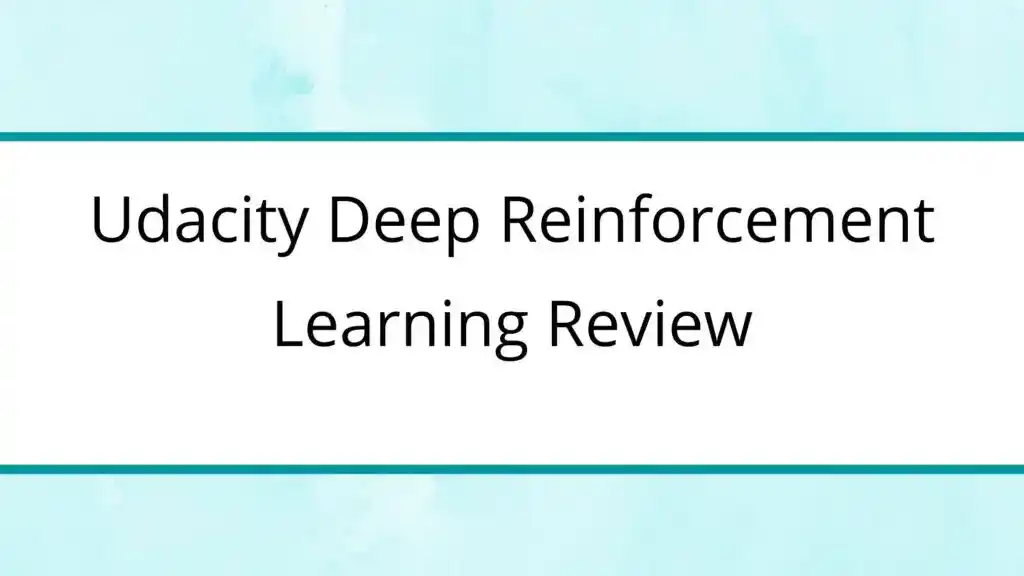Are you looking for Udacity Deep Reinforcement Learning Review?… If yes, first, read my latest Udacity Deep Reinforcement Learning Nanodegree Review and then decide whether to enroll or not in the program.
Now, without any further ado, let’s get started-
Udacity Deep Reinforcement Learning Review
- What is Reinforcement Learning?
- Content and Projects of Udacity Deep Reinforcement Learning Nanodegree
- Pricing of Udacity Deep Reinforcement Learning Nanodegree
- How to get a Discount on Udacity Deep Reinforcement Learning Nanodegree?
- What did I like about Udacity Deep Reinforcement Learning Nanodegree Program?/Pros
- What I didn't like about Udacity Deep Reinforcement Learning Nanodegree?/ Drawbacks
- Were Instructors Good and Experienced?
- Is Udacity Deep Reinforcement Learning Nanodegree Worth It?
- Conclusion
Before starting the Udacity Deep Reinforcement Learning Review, I would like to mention one important thing regarding Udacity Deep Reinforcement Learning Nanodegree.
Udacity Deep Reinforcement Learning Nanodegree is not for beginners. Yes, If you are a beginner with no previous knowledge of Python, Statistics, Machine Learning, and Its Frameworks(TensorFlow or Keras), I would not recommend you to enroll in this Nanodegree Program.
Udacity Deep Reinforcement Learning Nanodegree is an advanced-level program and only suitable for those who have previously worked on Machine Learning and Deep Learning problems and know any Deep Learning framework such as TensorFlow, Keras, or PyTorch.
My domain is “Depression Detection using Social Media Images” and for this task, I have collected the images from social media. For the Data Processing task, I thought to use Reinforcement Learning.
And then I heard about Udacity Deep Reinforcement Learning Nanodegree.
Reinforcement Learning is getting more popular day by day and it can perform better in a complex environment.
What is Reinforcement Learning?
Reinforcement Learning is also a machine learning problem. It is based on a self-learning mechanism.
Unlike in supervised learning, where the training dataset is present. But in Reinforcement Learning there is no supervision.
Reinforcement Learning is a hit-and-trial kind of learning. The main objective of a learner is to get maximum rewards.
The learner interacts dynamically with their environment. And the learner moves from one state to another. These rewards are given based on the action taken by the learner.
The guideline for which action to take in each state is called a policy.
Therefore, the objective of Reinforcement Learning is to find an optimal policy, so that rewards are maximized.
So, this way learner learns by himself.
So, this is the basic working of Reinforcement Learning. Now, let’s see What I have learned in Udacity Deep Reinforcement Learning Nanodegree Program.
Content and Projects of Udacity Deep Reinforcement Learning Nanodegree
The best thing I found in the Udacity Deep Reinforcement Learning Nanodegree program was its projects and quizzes. The whole Nanodegree program was comprised of various quizzes and projects.
There were 3 projects in this Nanodegree Program and 4 courses. The first course didn’t have any project because it was just an introduction to Reinforcement Learning. But from the second course, there was one project which I had to complete.
I found their technical mentor support very helpful. Whenever I got stuck and had doubts, I asked the mentor and he guided me.
These were the 4 courses-
- Foundations of Reinforcement Learning
- Value-Based Methods
- Policy-Based Methods
- Multi-Agent Reinforcement Learning
Course 1- Foundations of Reinforcement Learning
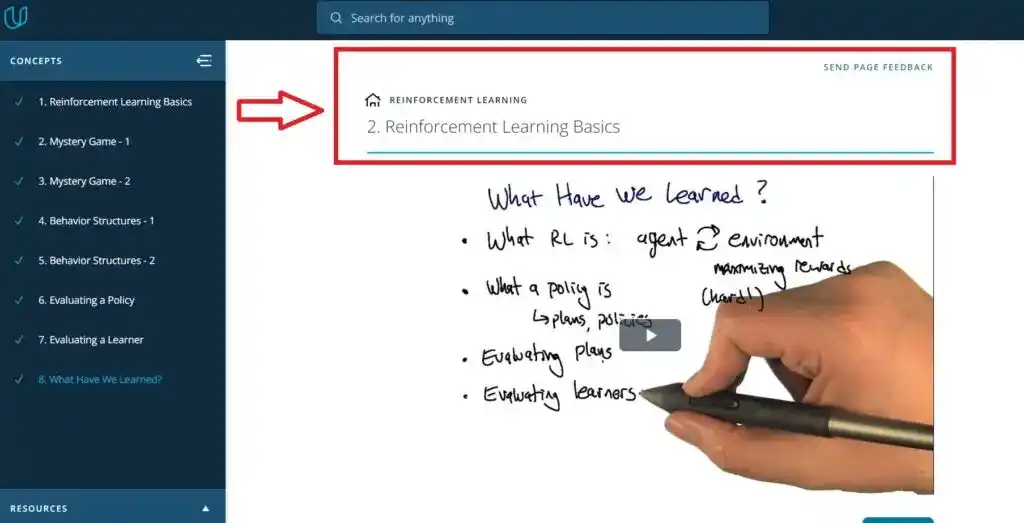
In this course, the instructor taught the basics of Reinforcement Learning and how to work on Reinforcement Learning Problems.
This was an interesting course for me. Because I was learning various new things which I was not aware of before.
I also learned about the Monte Carlo Method of Deep Reinforcement Learning. In Monte Carlo Method, there is no Model and the agent learn from the sampled experience. This was fun learning.
The instructor also taught us how we can solve the OpenAI Gym’s Taxi – V2 Task and Q-Learning. The overall course was excellent and the instructors were very friendly.
This course didn’t have any projects. So, after learning these concepts, I moved to the next course.
Course 2- Value-Based Methods
This was a total practice-based course. In this course, I learned Value-Based Methods. This was a little confusing course for me. Because the instructor taught building the CNN model in PyTorch. And I am more comfortable with TensorFlow.
That’s why I paused this course and learned PyTorch basics from other sources and then resumed this course.
And then I learned Deep Q-Learning and Value-Based Methods for real-world robotics.
After completing this course, There was one project, which I had to complete.
Project 1- Navigation
This was the first project of this Nanodegree program and it was totally a fun project. This was a game project and the goal of this project was to train an agent. And the agent has to navigate in a virtual world. And he has to collect “Yellow Bananas” as much as he can. But he has to avoid blue bananas.
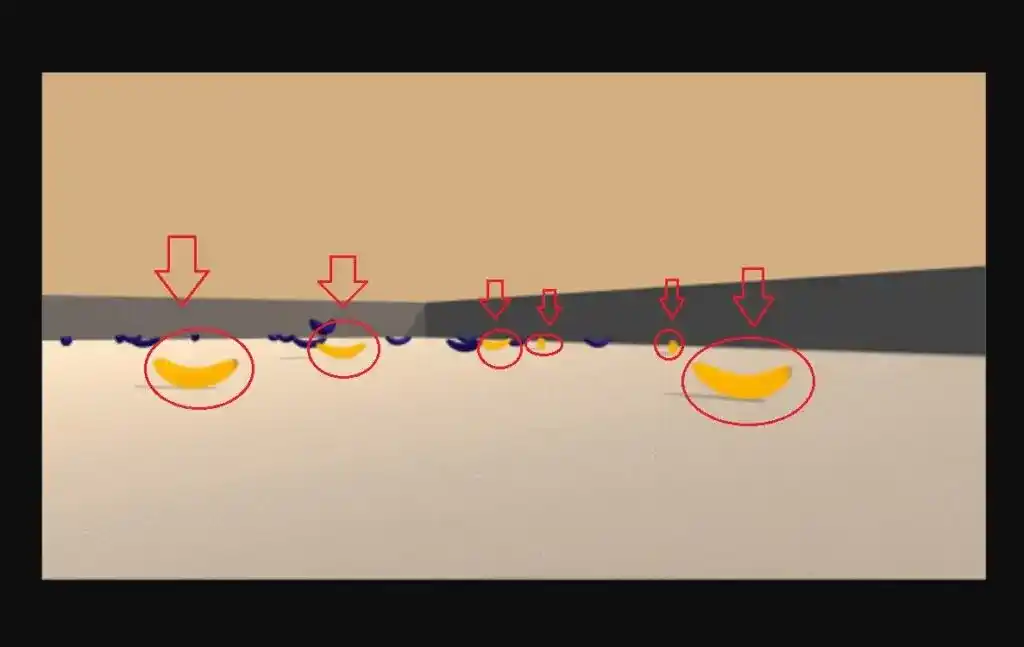
For this project, I had to configure a Python 3.6 or PyTorch 0.4.0 environment and then I installed the Unity environment. The configuration of the Unity ML-agent environment was already completed by Udacity.
Once I completed this project, the reviewer from Udacity reviewed the project and approved the project.
After the successful approval, I moved to the next course.
Course 3- Policy-Based Methods
This course was the perfect mixture of theory and practice. In this course, I learned Policy-Based Methods and understand various methods to improve the Policy Gradient Methods.
The Actro-Critic Methods were also explained by the instructor. Actro-Critic learning is a kind of temporal difference (TD) method where you learn a policy function and a value function at the same time.
These concepts froze my mind because digesting all these complex topics was not easy. But Udacity projects and quizzes helped me to clear the concepts.
At the end of this course, I learn financial trading strategies using Deep Reinforcement Learning.
For me, completing this course was the same as completing the milestone. After this course, there was one project.
Project 2- Continuous Control
This was the second project of this Nanodegree program. The goal of this project was to move double-jointed arms into target locations.
The agent received a reward of +0.1 when his hand took a step in the goal location. The Agent’s goal was to maintain his position at the target location.
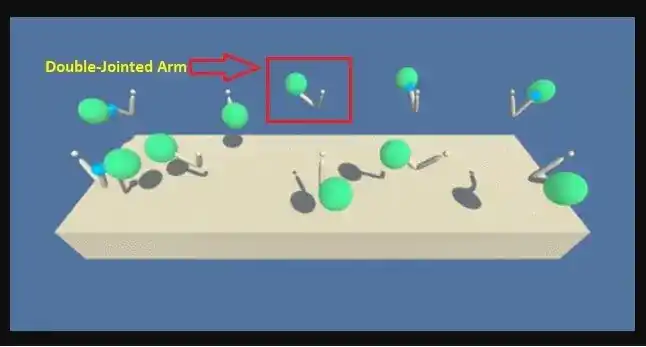
The course was hard but this project was again a fun game. After completing this course, I moved to the next and last course of this Nanodegree Program.
Course 4- Multi-Agent Reinforcement Learning
In this last course, I learned about Multi-Agent Reinforcement Learning.
Multi-Agent Reinforcement Learning basically involves multiple agents and they interact in a common environment. This concept blew my mind. It was a really interesting concept.
These multiple agents observed each other and then try to collaborate, compete, or collectively learn to achieve a particular task.
This course also discussed one Case Study Alphazero. AlphaZero algorithm was developed by DeepMind in 2018.
This algorithm trains two players for zero-sum board games and they can play against themselves. I found this course the most engaging and interesting as compared to other courses in this Nanodegree Program.
After this course, there was the last project which I had to complete. The project was also based on Multi-Agent Reinforcement Learning.
Project 3- Collaboration and Competition
This was the last project. In this project, I had to train two Reinforcement learning agents to play Table Tennis.
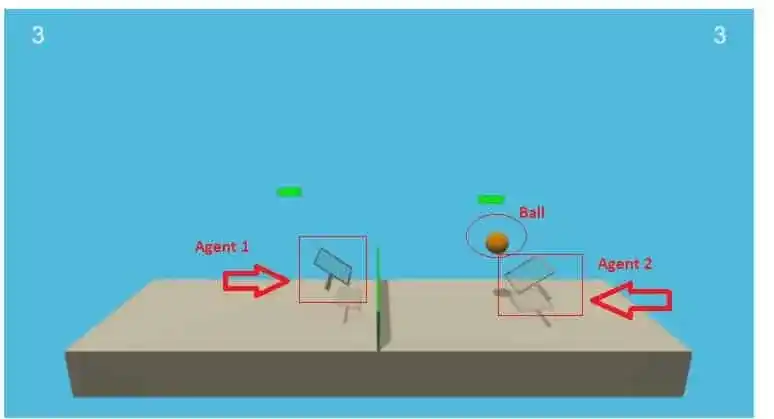
There were two agents who hit the ball and if the ball touch the net, the agent received a reward of +0.1. And if the ball hit the ground by the agent, then he received a reward of -0.01.
This project was really amazing and fun. But before starting this project, I had to choose between Policy-based vs Value-based Methods.
But overall, I enjoyed this project. The mentor was very helpful. I asked him many times throughout this project and he helped me by providing guidance.
So, this is all about the concepts and projects I learned and worked upon in Udacity Deep Reinforcement Learning Nanodegree.
Now, I would like to mention some other essential points related to Udacity Deep Reinforcement Learning Nanodegree.
Pricing of Udacity Deep Reinforcement Learning Nanodegree
According to Udacity, the Udacity Deep Reinforcement Learning Nanodegree will cost you around $286 for one month. But Udacity also provides Bundle Subscription option. And in this option, you will get Udacity Deep Reinforcement Learning Nanodegree for $975 for 4 months.
Udacity
I know Udacity Deep Reinforcement Learning Nanodegree is expensive compared to other courses. When I enrolled in this Nanodegree Program, I didn’t enroll by paying that much amount. I applied a discount coupon and I got 70% off on Udacity Deep Reinforcement Learning Nanodegree.
I will share how I got the discount so that you can also apply the discount coupon and get this Nanodegree in less amount.
How to get a Discount on Udacity Deep Reinforcement Learning Nanodegree?
Most of the time, you will see discount offers available on Udacity.
To get a discount on Udacity Deep Reinforcement Learning Nanodegree, simply visit the Nanodegree Page. It looks something like that-
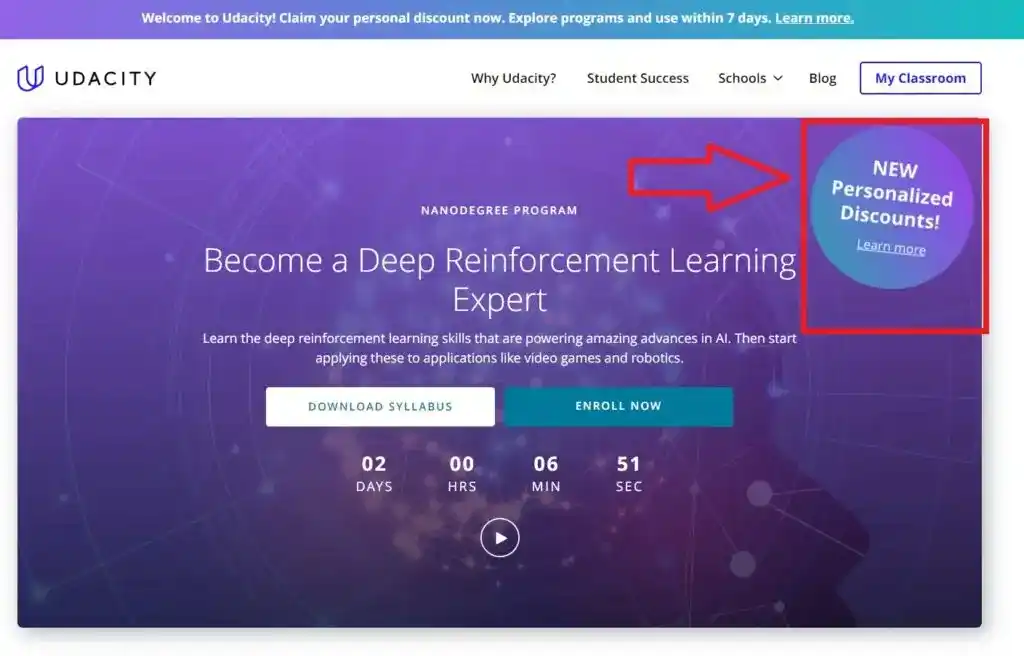
As you can see Udacity is offering a “Personalized Discount”.
So, you click on the “Personalized Discount” option. And you will be redirected to the next page where Udacity will ask you to answer two questions.
Answer these questions from the drop-down list. And you will get a 70% off on Udacity Deep Reinforcement Learning Nanodegree.
They will provide a unique coupon code. You have to copy this code and paste it at the time of payment. And that’s all, you have to do to get a discount.
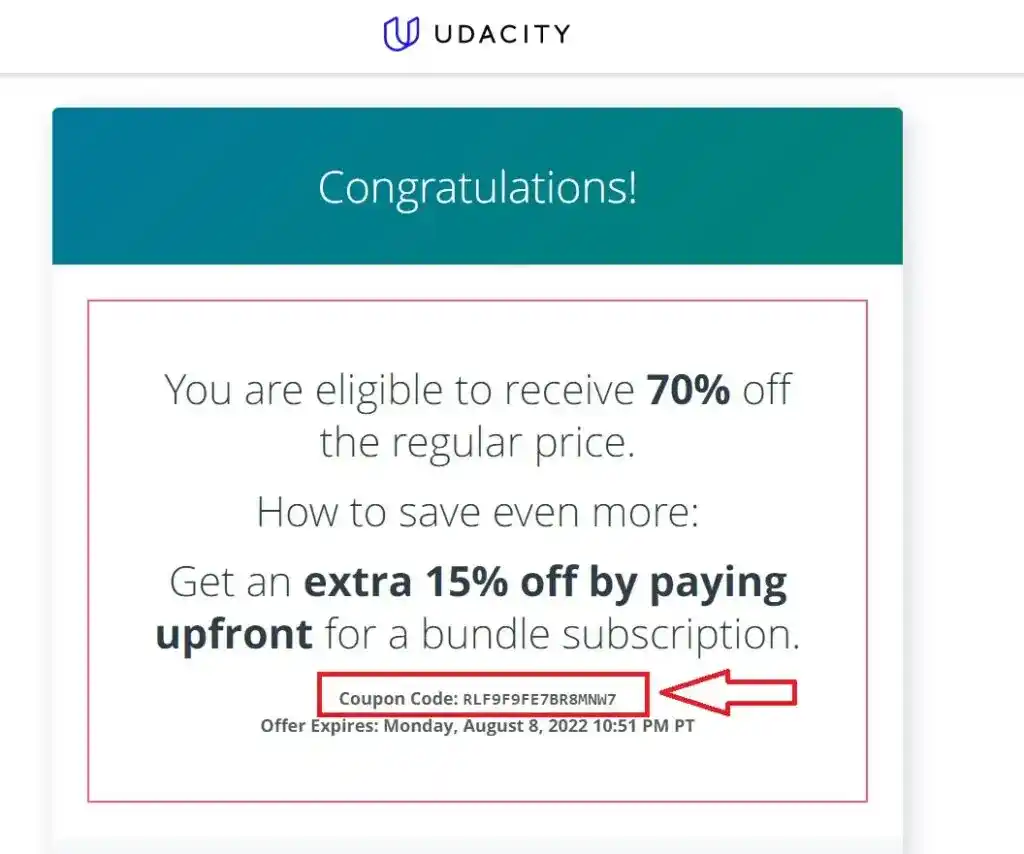
Now, I would like to mention What did I like about Udacity Deep Reinforcement Learning Nanodegree and what I didn’t like.
What did I like about Udacity Deep Reinforcement Learning Nanodegree Program?/Pros
- The whole Nanodegree Program was overall fun and had engaging content and projects.
- Along with the projects, content, and quizzes, there were some other references were provided in the form of papers and books. Which was quite helpful.
- The Nanodegree program strengthens my knowledge in the field of Deep Learning.
- I loved the visual representations provided by the instructors to clear the complex topics.
- It is the perfect balance of theory and practice. The practical-based learning helped me to understand the concepts.
- The Instructors suggested reading the original papers on Deep Reinforcement Learning and this helped me a lot to be aware of the latest research in the field.
- The project review feature was also very unique and helpful. You will get a personal review of your project.
- Extra Provided material was also useful and it helped me to learn concepts that I had no knowledge of.
- Their technical mentor support feature was amazing. Throughout the Nanodegree program, I asked my mentor and he helped me and cleared my doubts.
What I didn’t like about Udacity Deep Reinforcement Learning Nanodegree?/ Drawbacks
- It could be better if Udacity add more quizzes in Courses 2,3 and 4.
- The workspaces will be outdated soon and received output warnings when some cells were executed.
- Udacity doesn’t have a Mobile app. That’s why I found it difficult to study on my phone.
Were Instructors Good and Experienced?
I found all the instructors were experienced in the field of Deep Learning.
Alexis Cook was my favorite instructor. She explained topics very easily. Her pace of teaching was just perfect.
These were the other instructors-
- Mat Leonard
- Arpan Chakraborty
- Luis Serrano
- Cezanne Camacho
- Dana Sheahan
- Chhavi Yadav
- Juan Delgado
- Miguel Morales
All instructors had a solid understanding of Deep Learning Algorithms.
Now, after covering all essential points related to Udacity Deep Reinforcement Learning Nanodegree, it’s time to answer-
Is Udacity Deep Reinforcement Learning Nanodegree Worth It?
Yes, Udacity Deep Reinforcement Learning Nanodegree is worth it for those who have enough understanding of Python, Statistics, Machine Learning, and Deep Learning Frameworks(Keras, Tensorflow, or PyTorch). Udacity Deep Reinforcement Learning Nanodegree is not worth it for beginners. Their technical mentor support and project feedback feature make the Nanodegree Program unique from other courses.
Now it’s time to wrap up this Udacity Deep Reinforcement Learning Review.
Conclusion
I hope this Udacity Deep Reinforcement Learning Review helped you to decide whether to enroll in this program or not.
If you found this Udacity Deep Reinforcement Learning Review helpful, you can share it with others. And if you have any doubts or questions, feel free to ask me in the comment section.
All the Best!
Similar Searches
8 Best Advanced Deep Learning Courses Online You Must Know in 2025
How Good is Udacity Deep Learning Nanodegree in 2025?
9 Best+ Free Online Courses for PyTorch for Deep Learning in 2025
Best Deep Learning Courses on Coursera You Need to Know in 2025
Deep Learning vs Neural Network, The Main Differences!
Thank YOU!
Learn Deep Learning Basics here.
Though of the Day…
‘ Anyone who stops learning is old, whether at twenty or eighty. Anyone who keeps learning stays young.
– Henry Ford
Written By Aqsa Zafar
Founder of MLTUT, Machine Learning Ph.D. scholar at Dayananda Sagar University. Research on social media depression detection. Create tutorials on ML and data science for diverse applications. Passionate about sharing knowledge through website and social media.

